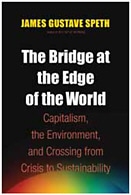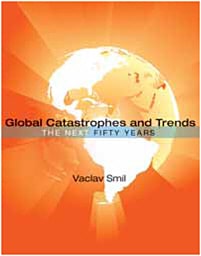U.S. Workers in a Global Job Market
Among the many changes that are part of the emergence of a global economy is a radically different relationship between U.S. high-tech companies and their employees. As late as the 1990s, a degree in science, technology, engineering, or mathematics (STEM) was a virtual guarantee of employment. Today, many good STEM jobs are moving to other countries, reducing prospects for current STEM workers and dimming the appeal of STEM studies for young people. U.S. policymakers need to learn more about these developments so that they can make the critical choices about how to nurture a key ingredient in the nation’s future economic health, the STEM workforce.
U.S. corporate leaders are not hiding the fact that globalization has fundamentally changed how they manage their human resources. Craig Barrett, then the chief executive officer (CEO) of Intel Corporation, said that his company can succeed without ever hiring another American. In an article in Foreign Affairs magazine, IBM’s CEO Sam Palmisano gave the eulogy for the multinational corporation (MNC), introducing us to the globally integrated enterprise (GIE): “Many parties to the globalization debate mistakenly project into the future a picture of corporations that is unchanged from that of today or yesterday….But businesses are changing in fundamental ways—structurally, operationally, culturally—in response to the imperatives of globalization and new technology.”
GIEs do not have to locate their high-value jobs in their home country; they can locate research, development, design, or services wherever they like without sacrificing efficiency. Ron Rittenmeyer, then the CEO of EDS, said he “is agnostic specifically about where” EDS locates its workers, choosing the place that reaps the best economic efficiency. EDS, which had virtually no employees in low-cost countries in 2002, had 43% of its workforce in low-cost countries by 2008. IBM, once known for its lifetime employment, now forces its U.S. workers to train foreign replacements as a condition of severance. In an odd twist, IBM is offering U.S. workers the opportunity to apply for jobs in its facilities in low-cost countries such as India and Brazil at local wage rates.
Policy discussions have not kept pace with changes in the job market, and little attention is being paid to the new labor market for U.S. STEM workers. In a time of GIEs, advanced tools and technology can be located anywhere, depriving U.S. workers of an advantage they once had over their counterparts in low-wage countries. And because technology workers not only create new knowledge for existing companies but are also an important source of entrepreneurship and startup firms, the workforce relocation may undermine U.S. world leadership as game-changing new companies and technologies are located in low-cost countries rather than the United States. The new corporate globalism will make innovations less geographically sticky, raising questions about how to make public R&D investments pay off locally or even nationally. Of course, scientists and engineers in other countries can generate new ideas and technologies that U.S. companies can import and put to use, but that too will require adjustments because this is not a strategy with which U.S. companies have much experience. In short, the geographic location of inputs and the flow of technology, knowledge, and people are sure to be significantly altered by these changes in firm behavior.
As Ralph Gomory, a former senior vice president for science and technology at IBM, has noted, the interests of corporations and countries are diverging. Corporate leaders, whose performance is not measured by how many U.S. workers they employ or the long-term health of the U.S. economy, will pursue their private interests with vigor even if their actions harm their U.S. employees or are bad prescriptions for the economy. Simply put, what’s good for IBM may not be good for the United States and vice versa. Although this may seem obvious, the policy and political processes have not fully adjusted to this reality. Policymakers still turn to the CEOs of GIEs for advice on what is best for the U.S. economy. Meanwhile, STEM workers have yet to figure out that they need to get together to identify and promote what is in their interest.
Most STEM workers have not embraced political activism. Consider employees in the information technology (IT) industry, one of the largest concentrations of STEM workers. They have by and large rejected efforts by unions to organize them. One might expect a professional organization such as the Institute of Electrical and Electronics Engineers (IEEE) to represent their interests, but IEEE is an international organization that sees little value in promoting one group of its members over another.
Because STEM workers lack an organized voice, their interests are usually neglected in policy discussions. There was no worker representative on the National Academies committee that drafted the influential report Rising Above the Gathering Storm. And although the Council on Competitiveness, which prepared the National Innovation Initiative, has representatives of labor unions in its leadership, they did not participate in any significant way on the initiative. Both studies had chairs who were CEOs of GIEs. It should come as no surprise, therefore, that neither of these reports includes recommendations that address the root problem of offshoring: the misalignment of corporate and national interests, in which firms compete by substituting foreign for U.S. workers. Instead, the reports diagnosed the problem as a shortage of qualified STEM workers and therefore advocated boosting R&D spending, expanding the pool of STEM workers, and recruiting more k-12 science and math teachers.
Low-cost countries attract R&D
Although everyone recognizes that globalization is remaking the R&D landscape, that U.S.-based companies are moving some of their high-value activities off shore, and that some low-income countries such as China and India are eager to enhance their capabilities, we actually have very little reliable and detailed data on what is happening. In fact, much of what we think we do know is contradictory. For example, in 2006, China was by far the leading exporter of advanced technology products to the United States, surpassing all of the European Union combined. On the other hand the number of triadic patents—those filed in Europe, the United States, and Japan—awarded to Chinese inventors in 2002 was a mere 177 versus more than 18,000 for American and more than 13,000 for Japanese inventors. A mixed picture also emerges from India. On the one hand, India’s indigenous IT services companies such as Infosys and Wipro have become the market leaders in their sector, forcing U.S.-based competitors such as IBM and HP to adopt their offshore outsourcing business model. But in 2003, India produced only 779 engineering doctorates compared to the 5,265 produced in the United States.
The standard indicators in this area are backward-looking and often out of date by the time they are published. More timely and forward-looking information might be gleaned from surveys of business leaders and corporate announcements. A survey by the United Nations Conference on Trade and Development of the top 300 worldwide R&D spenders found that China was the top destination for future R&D expansion, followed by the United States, India, Japan, the United Kingdom, and Russia. A 2007 Economist magazine survey of 300 executives about R&D site selection found that India was the top choice, followed by the United States and China.
No comprehensive list of R&D investments by U.S. multinational corporations exists, and the firms aren’t required to disclose the location of R&D spending in financial filings. We must rely on the information that companies offer voluntarily. From public announcements we know that eight of the top 10 R&D-spending companies have R&D facilities in China or India, (Microsoft, Pfizer, DaimlerChrysler, General Motors, Siemens, Matsushita Electric, IBM, and Johnson & Johnson), and that many of them plan to increase their innovation investments in India and China.
Although early investments were for customizing products for a local market, foreign-based facilities are now beginning to develop products for global markets. General Motors has a research presence in India and China, and in October 2007, it announced that it would build a wholly owned advanced research center to develop hybrid technology and other advanced designs in Shanghai, where it already has a 1,300-employee research center as part of a joint venture with the Shanghai Automotive Industry Corporation. Pfizer, the number two R&D spender, is outsourcing drug development services to India and already has 44 new drugs undergoing clinical trials there. The company has approximately 200 employees at its Shanghai R&D center, supporting global clinical development. Microsoft has a large and expanding R&D presence in India and China. Microsoft’s India Development Center, its largest such center outside the United States, employs 1,500 people. The Microsoft China R&D Group also employs 1,500, and in 2008, Microsoft broke ground on a new $280-million R&D campus in Beijing and announced an additional $1 billion investment for R&D in China. Intel has about 2,500 R&D workers in India and has invested approximately $1.7 billion in its Indian operations. Its Indian engineers designed the first all-India microprocessor, the Xeon 7400, which is used for high-end servers. Intel has been investing in startup companies in China, where it created a $500 million Intel Capital China Technology Fund II to be used for investments in wireless broadband, technology, media, telecommunications, and “clean tech.”
Although General Electric spends less than the above companies on R&D, it has the distinction of having the majority of its R&D personnel in low-cost countries. Jack Welch, GE’s former CEO, was an early and significant evangelizer of offshoring. The firm has four research locations worldwide, in New York, Shanghai, Munich, and Bangalore. Bangalore’s Jack Welch R&D Center employs 3,000 workers, more than the other three locations combined. Since 47% of GE’s revenue in 2008 came from the United States and only 16% from Asia, it is clear that it is not moving R&D to China and India just to be close to its market.
The fact that China and India are able to attract R&D is an indicator that they have improved their ability to attract the mid-skill technology jobs in the design, development, and production stages. The true benefit of attracting R&D activities might be the downstream spillover benefits in the form of startup firms and design and development and production facilities.
U.S. universities have been a magnet for talented young people interested in acquiring the world’s best STEM education. Many of these productive young people have remained in the United States, become citizens, and made enormous contributions to the productivity of the U.S. economy as well as its social, cultural, and political life. But these universities are beginning to think of themselves as global institutions that can deliver their services anywhere in the world.
Cornell, which already calls itself a transnational institution, operates a medical school in Qatar and sent its president to India in 2007 to explore opportunities to open a branch campus. Representatives of other top engineering schools, such as Rice, Purdue, Georgia Tech, and Virginia Tech, have made similar trips. Carnegie Mellon offers its technology degrees in India in partnership with a small private Indian college. Students take most of their courses in India, because it is less expensive, and then spend six months in Pittsburgh to complete the Carnegie Mellon degree.
If students do not have to come to the United States to receive a first-rate education, they are far less likely to seek work in the United States. More high-quality job opportunities are appearing in low-cost countries, many of them with U.S. companies. This will accelerate the migration of STEM jobs out of the United States. Even the perfectly sensible move by many U.S. engineering programs to provide their students with more international experience through study-abroad courses and other activities could contribute to the migration of STEM jobs by preparing these students to manage R&D activities across the globe.
Most of the information about university globalization is anecdotal. The trend is clearly in its early stages, but there are indications that it could grow quickly. This is another area in which more reliable data is essential. If the nation’s leaders are going to manage university activities in a way that will advance U.S. interests, they will need to know much more about what is happening and what is planned.
Uncertainty and risk
The emerging opportunities for GIEs to take advantage of high-skilled talent in low-cost countries have markedly increased both career uncertainty and risk for the U.S. STEM workforce. Many U.S. STEM workers worry about offshoring’s impact on their career prospects and are altering career selection. For instance, according to the Computing Research Association, enrollment in bachelors programs in computer science dropped 50% from 2002 to 2007. The rising risk of IT job loss, caused in part by offshoring, was a major factor in students’ shying away from computer science degrees.
Offshoring concerns have been mostly concentrated on IT occupations, but many other STEM occupations may be at risk. Princeton University economist Alan Blinder analyzed all 838 Bureau of Labor Statistics standard occupation categories to estimate their vulnerability to offshoring. He estimates that nearly all (35 of 39) STEM occupations are “offshorable,” and he described many as “highly vulnerable.” By vulnerable, he is not claiming that all, or even a large share, of jobs in those occupations will actually be lost overseas. Instead, he believes that those occupations will face significant new wage competition from low-cost countries. Further, he finds that there is no correlation between vulnerability and education level, so simply increasing U.S.education levels, as many have advocated, will not slow offshoring.
Workers need to know which jobs will be geographically sticky and which are vulnerable to being offshored so that they can make better choices for investing in their skills. But there is a great deal of uncertainty about how globalization will affect the level and mix of domestic STEM labor demand. The response of some workers appears to be to play it safe and opt for occupations, often non-STEM, that are likely to stay. Further, most employers, because of political sensitivities, are very reluctant to reveal what jobs they are offshoring, sometimes going to great lengths to mask the geographic rebalancing of their workforces. The uncertainty introduced by offshoring aggravates the already volatile job market that is characteristic of the dynamic high-tech sector.
For incumbent workers, especially those in mid-career, labor market volatility creates a special dilemma. The two prior technology recessions, 1991 to 1992 and 2002 to 2004, have been especially long, longer even than for the general labor force. At the same time, technology-obsolescence cycles are shortening, which means that unemployed STEM workers can find that there skills quickly become outdated. If unemployment periods are especially long, it will be even more difficult to reenter the STEM workforce when the market rebounds. An enormous amount of human capital is wasted when experienced STEM professionals are forced to move into other professions because of market vagaries.
Policy has done little to reduce risks and uncertainty for STEM workers. The government does not collect data on work that is moving offshore or real-time views of the STEM labor markets, both of which would help to reduce uncertainty. Trade Adjustment Assistance (TAA), the primary safety net for workers who lose their jobs due to international trade, has not been available for services industries, but it has been authorized as part of the recently passed stimulus legislation. This is one part of the stimulus that should be made permanent. In addition, Congress should ensure that the program is adequately funded, because it is often oversubscribed, and the Department of Labor should streamline the eligibility regulations, because bureaucratic rules often hamper the ability of displaced workers to obtain benefits. This will be especially true with services workers whose employers are reluctant to admit that workers are displaced due to offshoring.
Response to competition
One of the most important high-technology stories of the past decade has been the remarkably swift rise of the Indian IT services industry, including firms such as Wipro, Infosys, TCS, and Satyam, as well as U.S.-based firms such as Cognizant and iGate that use the same business model. There is no need to speculate about whether the Indian firms will eventually take the lead in this sector; they already have become market leaders. By introducing an innovative, disruptive business model, the Indian firms have turned the industry upside down in only four years. U.S. IT services firms such as IBM, EDS, CSC, and ACS were caught flat-footed. Not a single one of those firms would have considered Infosys, Wipro, or TCS as direct competitors as recently as 2003, but now they are chasing them by moving as fast as possible to adopt the Indian business model, which is to move as much work as possible to low-cost countries. The speed and size of the shift is breathtaking.
The Indian IT outsourcing firms have extensive U.S. operations, but they prefer to hire temporary guest workers with H-1B or L-1 visas. The companies train these workers in the United States, then send them home where they can be hired to do the same work at a lower salary. These companies rarely sponsor their H-1B and L-1 workers for U.S. legal permanent residence.
The important lesson is how the U.S. IT services firms have responded to the competitive challenge. Instead of investing in their U.S. workers with better tools and technologies, the firms chose to imitate the Indian model by outsourcing jobs to low-cost countries. IBM held a historic meeting with Wall Street analysts in Bangalore in June 2006, where its whole executive team pitched IBM’s strategy to adopt the Indian offshore-outsourcing business model, including an additional $6 billion investment to expand its Indian operations. IBM’s headcount in India has grown from 6,000 in 2003 to 73,000 in 2007, and is projected to be 110,000 by 2010. The U.S. headcount is about 120,000. And IBM is not alone. Accenture passed a historic milestone in August 2007, when its Indian headcount of 35,000, surpassed any of its other country headcounts, including the United States, where it had 30,000 workers. In a 2008 interview, EDS’s Rittenmeyer extolled the profitability of shifting tens of thousands of the company’s workers from the United States to low-cost countries such as India. He said outsourcing is “not just a passing fancy. It is a pretty major change that is going to continue. If you can find high-quality talent at a third of the price, it’s not too hard to see why you’d do this.” ACS, another IT services firm, recently told Wall Street analysts that it plans its largest increase in offshoring for 2009, when it will move many of its more complex and higher-wage jobs overseas so that nearly 35% of its workforce will be in low-cost countries.
As Alan Blinder’s analysis indicates, many other types of STEM jobs could be offshored. The initiative could come from foreign competitors or from U.S.-based GIEs.
Preserving STEM jobs
Private companies will have the final say about the offshoring of jobs, but the federal government can and should play a role in tracking what is happening in the global economy and taking steps that help the country adapt to change. Given the speed at which offshoring is increasing in scale, scope, and job sophistication, a number of immediate steps should be taken.
Collect additional, better, and timelier data. We cannot expect government or business leaders to make sound decisions in the absence of sound data. The National Science Foundation (NSF) should work with the appropriate agencies, such as the Bureaus of Economic Analysis (BEA) and Labor Statistics and the Census, to begin collecting more detailed and timely data on the globalization of innovation and R&D.
Specifically, the NSF Statistical Research Service (SRS) should augment existing data on multinational R&D investments to include annual detailed STEM workforce data, including occupation, level of education, and experience for workers within and outside the United States. These data should track the STEM workforce for multinational companies in the United States versus other countries. The SRS should also collect detailed information on how much and what types of R&D and innovation activities are being done overseas. The NSF Social, Behavioral, and Economic Sciences division should do four things: 1) begin a research program to estimate the number of jobs that have been lost to offshoring and to identify the characteristics of jobs that make them more or less vulnerable to offshoring; 2) assess the extent of U.S. university globalization and then track trends; 3) identify the effects of university globalization on the U.S. STEM workforce and students, and launch a research program to identify and disseminate best practices in university globalization; and 4) conduct a study to identify the amount and types of U.S. government procurement that are being offshored. Finally, the BEA should implement recommendations from prior studies, such as the 2006 study by MIT’s Industrial Performance Center, to improve its collection of services data, especially trade in services.
Establish an independent institute to study the implications of globalization. Blinder has said that the economic transformation caused by offshoring could rival the changes caused by the industrial revolution. In addition to collecting data, government needs to support an independent institute to analyze the social and economic implications of these changes and to consider policy options to address the undesirable effects. A $40 million annual effort to fund intramural and extramural efforts would be a good start.
Facilitate worker representation in the policy process. Imagine if a major trade association, such as the Semiconductor Industry Association, was excluded from having any representative on a federal advisory committee making recommendations on trade and export control policy in the semiconductor industry. It would be unfathomable. But we have precisely this arrangement when it comes to making policies that directly affect the STEM workforce. Professional societies and labor unions should be invited to represent the views of STEM workers on federal advisory panels and in congressional hearings.
Create better career paths for STEM workers. STEM offshoring has created a pessimistic attitude about future career prospects for incumbent workers as well as students. To make STEM career paths more reliable and resilient, the government and industry should work together to create programs for continuing education, establish a sturdier safety net for displaced workers, improve information about labor markets and careers, expand the pool of potential STEM workers by making better use of workers without a college degree, and provide assistance for successful reentry into the STEM labor market after voluntary and involuntary absences. Some specific steps are:
- The government should encourage the adoption and use of low-cost asynchronous online education targeted at incumbent STEM workers. The program would be coordinated with the appropriate scientific and engineering professional societies. A pilot program should assess the current penetration rates of online education for STEM workers and identify barriers to widespread adoption.
- The Department of Labor should work with the appropriate scientific and engineering professional societies to create a pilot program for continuous education of STEM workers and retraining of displaced mid-career STEM workers. Unlike prior training programs, these should be targeted at jobs that require at least a bachelor’s degree. Funding could come from the H-1B visa fees that companies pay when they hire foreign workers.
- The National Academies should form a study panel to identify on-ramps to STEM careers for students who do not go to college and recommend ways to eliminate barriers and identify effective strategies for STEM workers to more easily reenter the STEM workforce.
- Congress should reform immigration policy to increase the number of highly skilled people admitted as permanent residents and reduce the number of temporary H-1B and L-1 work visas. Rules for H-1B and L-1 visas should be tightened to ensure that workers receive market wages and do not displace U.S. citizens and permanent resident workers.
Improve the competitiveness of the next generation of STEM workers. As workers in other countries develop more advanced skills, U.S. STEM workers must develop new skills and opportunities to distinguish themselves. They should identify and pursue career paths that are geographically sticky, and they should acquire more entrepreneurship skills that will enable them to create their own opportunities. The National Academies could help by forming a study panel to identify necessary curriculum reforms and best practices in teaching innovation, creativity, and entrepreneurship to STEM students. NSF should encourage and help fund study-abroad programs for STEM students to improve their ability to work in global teams.
Public procurement should favor U.S. workers. The public sector—federal, state, and local government—is 19% of the economy and is an important mechanism that should be used by policymakers. There is a long, strong, and positive link between government procurement and technological innovation. The federal government not only funded most of the early research in computers and the Internet but was also a major customer for those new technologies. U.S. taxpayers have a right to know that government expenditures at any level are being used appropriately to boost innovation and help U.S. workers. The first step is to do an accounting of the extent of public procurement that is being offshored. Then the government should modify regulations to keep STEM intensive-work at home.
We are at the beginning of a major structural shift in global distribution of R&D and STEM-intensive work. Given the critical nature of STEM to economic growth and national security, the United States must begin to adapt to these changes. The responses that have been proposed and adopted so far are based on the belief that nothing has changed. Simply increasing the amount of R&D spending, the pool of STEM workers, and the number of k-12 science and math teachers is not enough. The nation needs to develop a better understanding of the new dynamics of the STEM system and to adopt policies that will advance the interests of the nation and its STEM workers.

 Many sectarian solutions have been proposed to resolve the deadlock between economy and ecology. Free marketers contend that it is a matter of getting the prices right and internalizing externalities. We are all free riders who are not paying for the despoliation of nature from our pollution. Regulation proponents argue that we need betters laws and stronger enforcement. Neo-anarchists and bioregionalists believe that we cannot achieve sustainable societies until we plan our communities according to proper scale and principles of self-sufficiency. Eco-radicals maintain that population and economic growth must be limited by the ecological constraints of the planet and that the protection of ecosystems that sustain our lives must receive the highest priority. Egalitarian social ecologists remind us that the responsibility for protecting the biosphere falls heavily on the nations that have contributed the most to the planet’s environmental threats and those economies that have already benefited the most from their exploitation of natural resources.
Many sectarian solutions have been proposed to resolve the deadlock between economy and ecology. Free marketers contend that it is a matter of getting the prices right and internalizing externalities. We are all free riders who are not paying for the despoliation of nature from our pollution. Regulation proponents argue that we need betters laws and stronger enforcement. Neo-anarchists and bioregionalists believe that we cannot achieve sustainable societies until we plan our communities according to proper scale and principles of self-sufficiency. Eco-radicals maintain that population and economic growth must be limited by the ecological constraints of the planet and that the protection of ecosystems that sustain our lives must receive the highest priority. Egalitarian social ecologists remind us that the responsibility for protecting the biosphere falls heavily on the nations that have contributed the most to the planet’s environmental threats and those economies that have already benefited the most from their exploitation of natural resources. Here is his basic argument, presented in the form of “four simple truths” and an equally simplistic proposal: Ability varies, half the children are below average, too many people go to college, our future depends on how we educate the academically gifted, and privatization will fix the schools. Space constraints prevent me from undoing the errors of omission and commission in each of these claims, so I’ll concentrate on one or two and ask readers to extrapolate from there.
Here is his basic argument, presented in the form of “four simple truths” and an equally simplistic proposal: Ability varies, half the children are below average, too many people go to college, our future depends on how we educate the academically gifted, and privatization will fix the schools. Space constraints prevent me from undoing the errors of omission and commission in each of these claims, so I’ll concentrate on one or two and ask readers to extrapolate from there. The book’s strength lies in Greenberg’s skill as an interviewer of scientists and interpreter of complex developments. The first seven chapters of the book address a range of troublesome issues in science, including financial strain, federal and corporate funding, varieties of academy/industry relations, consequences of the Bayh-Dole Act, academic capitalism and entrepreneurship, breaches of human-subjects and conflict-of-interest regulations, and the regulatory environment. Greenberg covers these through detailed stories and analyses drawn from over 200 interviews with researchers, administrators, regulators, and others, as well as press reports and relevant literature. The strongest of these chapters is a lively review of interactions among federal regulators, institutions, and academic associations concerning human-subjects protection during the past 10 years. Here is Greenberg at his best, revealing the drama and personalities behind federal shutdowns of research programs that violated human- subjects regulations.
The book’s strength lies in Greenberg’s skill as an interviewer of scientists and interpreter of complex developments. The first seven chapters of the book address a range of troublesome issues in science, including financial strain, federal and corporate funding, varieties of academy/industry relations, consequences of the Bayh-Dole Act, academic capitalism and entrepreneurship, breaches of human-subjects and conflict-of-interest regulations, and the regulatory environment. Greenberg covers these through detailed stories and analyses drawn from over 200 interviews with researchers, administrators, regulators, and others, as well as press reports and relevant literature. The strongest of these chapters is a lively review of interactions among federal regulators, institutions, and academic associations concerning human-subjects protection during the past 10 years. Here is Greenberg at his best, revealing the drama and personalities behind federal shutdowns of research programs that violated human- subjects regulations.


 Vaclav Smil is well aware of these and other problems that confront any would-be seer. As a result, he has written a different kind of consideration of the global future, one marked by careful analysis, cautious predictions, and a restrained tone. “In sum,” he tells us in the book’s preface, “do not expect any grand forecasts or prescriptions, any deliberate support for euphoric or catastrophic views of the future, any sermons or ideologically slanted arguments.” Smil readily acknowledges that we live in a world of inherent uncertainty in which even the near-term future cannot be accurately predicted. Yet he also contends that a number of risks and trends can be quantitatively assessed, giving us a sense of the relative likelihood of certain outcomes. Such a modest approach, limited in its purview to the next 50 years, is unlikely to generate public excitement or large book sales. It can, however, provide a useful corrective for the inflated claims of other futurists as well as generate constructive guidelines for risk minimization.
Vaclav Smil is well aware of these and other problems that confront any would-be seer. As a result, he has written a different kind of consideration of the global future, one marked by careful analysis, cautious predictions, and a restrained tone. “In sum,” he tells us in the book’s preface, “do not expect any grand forecasts or prescriptions, any deliberate support for euphoric or catastrophic views of the future, any sermons or ideologically slanted arguments.” Smil readily acknowledges that we live in a world of inherent uncertainty in which even the near-term future cannot be accurately predicted. Yet he also contends that a number of risks and trends can be quantitatively assessed, giving us a sense of the relative likelihood of certain outcomes. Such a modest approach, limited in its purview to the next 50 years, is unlikely to generate public excitement or large book sales. It can, however, provide a useful corrective for the inflated claims of other futurists as well as generate constructive guidelines for risk minimization.